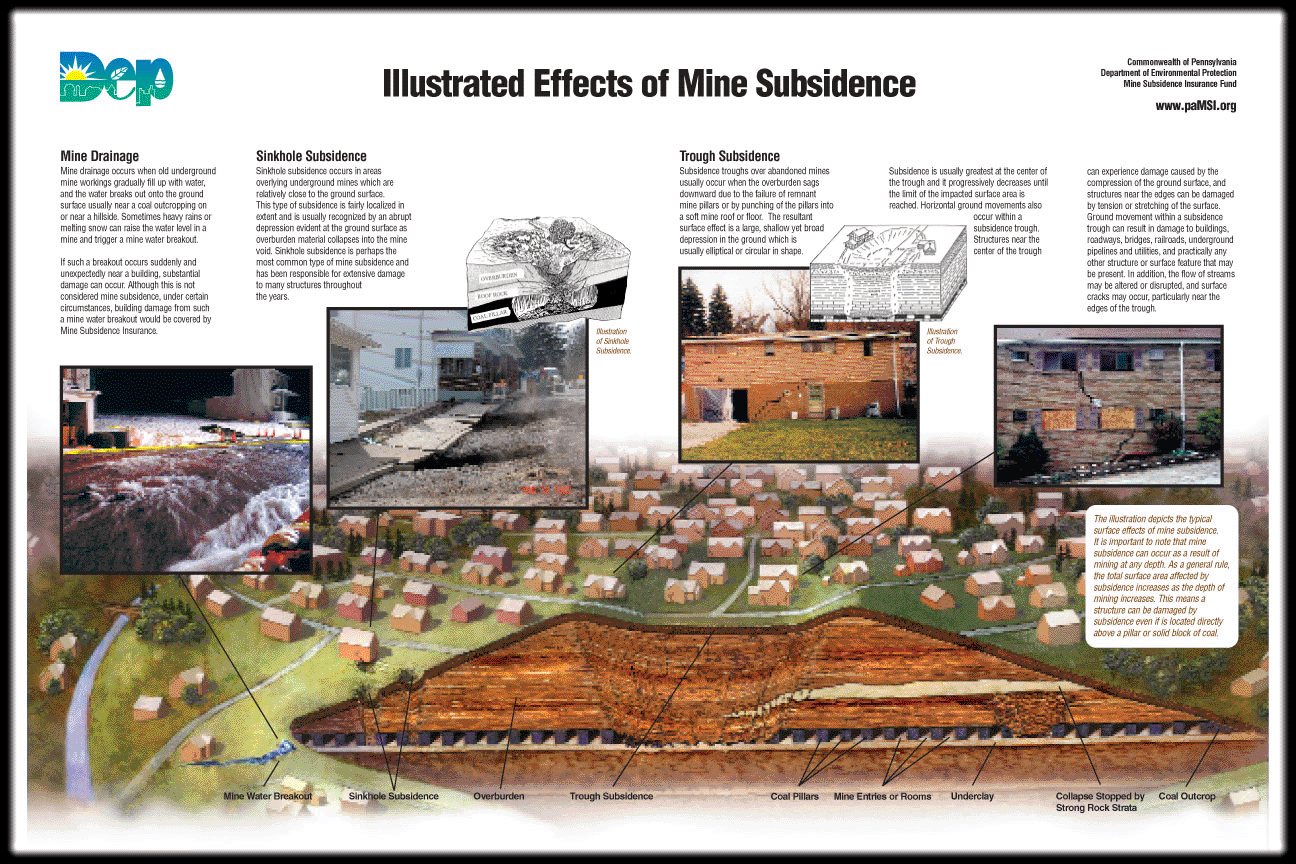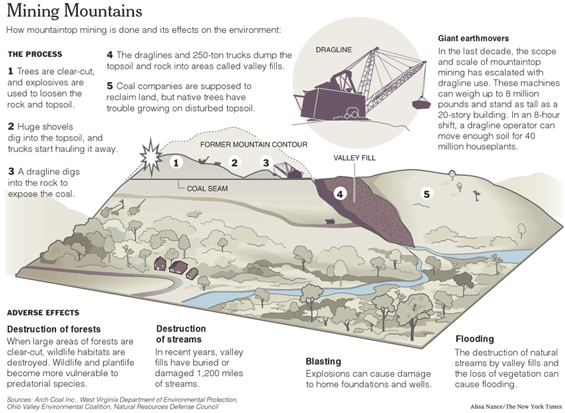How does coal mining affect Appalachian environment?

Mine Subsidence
This is a process where the ground level around a mine area lowers as a result of the coal that was removed beneath. Illustrated in the diagram below.
Mountaintop Removal
Mountain top removal is a process where plants are cleared from the top of a mountain, the mountain is then blasted because many coal seems are buried deep beneath the surface of the mountain. After blasting, digging is done to remove coal and debris from blasting. Next, the debris are dumped into nearby valleys. This has buried more than 2,000 miles of headwater streams and polluted more. Coal is then washed during the processing phase which creates coal slurry. Mountaintop removal destroys vital forests which contain much of the biodiversity found in America. A recent study found that MTR has destroyed 6.8% of Appalachian forests. It was also found that from 1930-2000, coal mining altered about 5.9 million acres of natural landscape.



Underground Mining
During underground mining, columns are used to hold the earth above up. After mining was finished, the columns were removed and the mines were left to collapse. The land on top of the mine begins to sink, and during that process the toxins within the mine and as a result from mining move to the surface. The toxins can then wash away into other areas and cause more issues in the environment.


The Importance of Rehabilitation
Rehabilitation of land after it has been mined is extremely important. After rehabilitation, the land can be used for agriculture, forestry, wildlife habitation, and recreation. As a result of many negative environmental effects, the U.S. enacted the Surface Mining Control and Reclamation Act of 1977, which now requires plans to be approved before mining can begin in an area.


